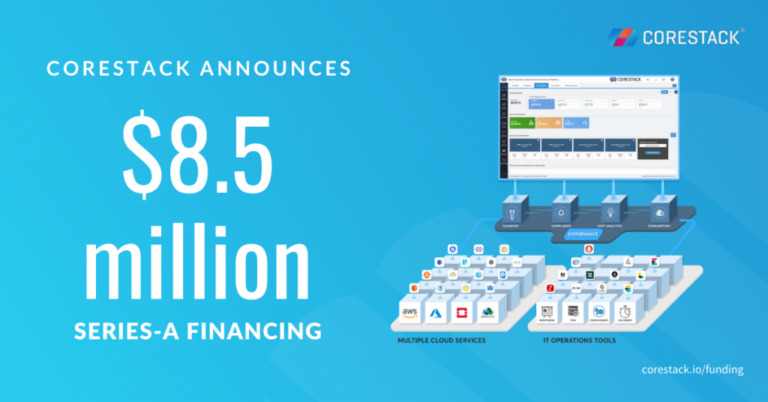Corestack Complements Azure Arc To Achieve Autonomous Multi-Cloud Governance
Enterprises embrace hybrid-cloud models to benefit from the best of both on-premise (more control, performance) and cloud infrastructure (agility, opex). Also, enterprises are increasingly adopting services from multiple cloud providers, which befits their application-first strategy. All the cloud service providers have accepted this truth and are rolling out solutions that help enterprises navigate their hybrid and multi-cloud journey. Once such announcement – Azure Arc – is from Microsoft Azure at the recently concluded Microsoft Ignite conference at Orlando. The objective of this article is to throw light on how Azure Arc and cloud governance platforms such as CoreStack can together enable enterprises to pursue their digital ambitions confidently.
Azure Arc simplifies the management of complex IT environments that span across on-premise data centers, multiple clouds, and edge devices. It achieves this by enabling the deployment of Azure services anywhere and extending Azure management to any infrastructure. It empowers enterprises to:
- Centrally govern IT resources across distributed environments
- Deploy, configure, and manage Kubernetes applications at scale
- Automate patching, upgrades, security, and on-demand scaling for data farms
CoreStack is an autonomous multi-cloud governance platform that empowers enterprises to rapidly achieve continuous compliance and operations automation at scale using cloud-native services. The key business benefits it offers are:
- Avoid stringent non-compliant penalties
- Run multi-cloud operations efficiently
- Thwart ongoing digital threats
- Accelerate innovation with self-service
- Minimize cost leakages
Easily achieve service orchestration and autonomous governance with Azure Arc and CoreStack:
- Onboard an Azure subscription into CoreStack along with governance rules for compliance, operations, security, consumption, and cost
- Onboard an AWS account into CoreStack. CoreStack discovers all the AWS resources in that account
- Execute Azure_Arc_Onbaording-template which performs two simple tasks
- Install the Azure connected machine agent (Azcmagent) on the target VM
- Run the Azcmagent by passing the target Azure resource group name, tenant, and subscription ID as arguments
- CoreStack configures the AWS VM as a resource under Azure Arc Service
- It automatically applies all the governance rules applicable to the Azure resource group/tenant/subscription ID to the newly connected AWS VM using Azure-native services such as Azure Monitor, Azure Security Center, Azure Policies, and the relevant tags
How CoreStack complements Azure Arc?
Azure Arc operates at the guest level and allows Azure-native services to be applied to AWS VM (or VM from any other platforms). However, Azure Arc does not have service orchestration capability which is required to perform API level actions in AWS. CoreStack fills this gap through native cloud APIs, provisioning templates, and inbuilt orchestration engine. CoreStack also automates the configuration of Azure-native services on the AWS VM as soon as it is added in Azure Arc.
Azure Arc currently does not support orchestration of server configurations, patch, and update management through Azure extensions. Since the multi-cloud VM management for the Arc is through agents, the services are going to be limited in scope and availability.
Listed below are the areas where CoreStack adds value to Azure Arc users over and above its Continuous and Autonomous Governance:
Thus, by leveraging the power of Azure Arc and CoreStack, enterprises can simplify, orchestrate, and harness the power of distributed cloud environments. For more details, please contact us here.
Note: Azure Arc is currently available in preview, and the features outlined here are based on the information available at the time of writing this article. CoreStack is Azure Gold Partner and is available in the Azure market place.









